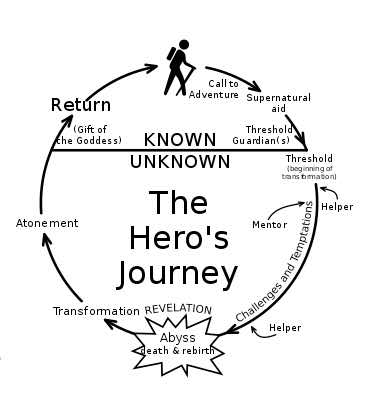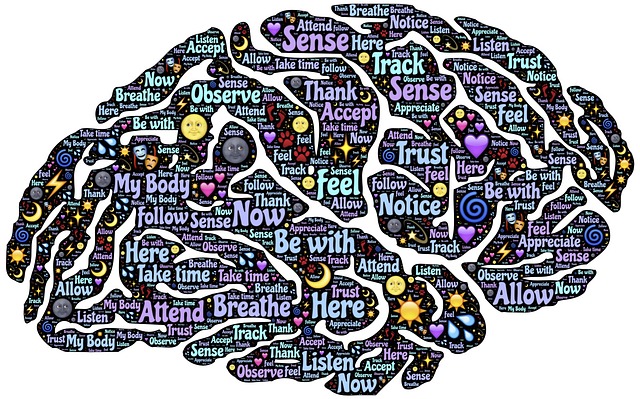Create Stories That Engage and Educate
Do you use stories to engage and educate your audience? Would you like to see how powerful stories can be?
This article should help you discover how to create stories for your business that move people to act. One of the people I admire, Park Howell, is a brand story strategist who helps businesses grow through the power of their stories.
Park explores and unravels the mystery behind the mechanics of storytelling, a skill that every marketer should master. You’ll also discover why this is important to social marketers. Park shares what marketers need to know about storytelling for their business, and how to create stories that engage their audience.
Let’s Examine the Story for Business
Park, an advertising and marketing executive, shares that it always frustrated him that it was difficult to understand why a TV spot or radio commercial was going to work. His interest in stories began while working in advertising.
Story for Business began about the same time Park’s middle son, Parker, went to Chapman University film school. He read Parker’s textbooks because he wanted to understand what his son was learning to prepare him for working in Hollywood, the most competitive storytelling place in the world.
One of the screenwriting books was Save the Cat! by Blake Snyder. Blake, who was the king of family-oriented screenplays in the 1980s than anybody else, had a prescription for the 15 beats to a story.
Blake felt that a screenplay needs to be the same number of pages as the weight of a jockey (110). Blake could tell you on each page what needed to happen. Though it sounds formulaic, it actually worked very well for Blake and many other writers, and the approach fascinated him.

When Park was introduced to the writing of Joseph Campbell, America’s foremost mythologist, he noted how Blake had adapted Campbell’s The Hero’s Journey, or what Joseph called the monomyth, a 17-step process for story structure.
Reading The Hero’s Journey, Park realized that he was looking at a brand strategy plan. Park understood that he was already following this story structure with his plan. He wondered what would happen if he intentionally did this and adopted it as his outline for writing stories.

Joseph Campbell’s Monomyth is a 17-step process for story structure.
Park reduced the steps of the Hero’s Journey to 10 steps for business, and adapted it to guide the creation of content to tell a story that would make a difference. Park was amazed how well it worked so he fine-tuned it into what he calls the Story Cycle, a process that can be used for everything from brand strategy to creating a 30-second TV commercial.
Park Howell created the Story Cycle, which was based on Joseph Campbell’s Hero’s Journey.
In the social media world, you have mere seconds to communicate your story. To get your story across you need to follow the three fundamental principles of the three-act play: start with a setup, introduce conflict, and resolve the conflict.
If you can do that in a 6-second video, you will have connected with the deep reaches of your audience’s minds.
Why Marketers Should Care About Stories
Park believes that stories are people’s superpowers, and believes that the human brain is hardwired to constantly search for them. Humans can go weeks without eating and days without drinking, but only roughly 35 seconds without their brains scanning their environment to create meaning out of what they see.
Park explains how while his son Parker was studying film and Park was studying what Hollywood knows about story structure, his youngest son was suffering from encephalitis and brain surgery.
During that time, Park was reading everything he could about how the brain functions. That’s when, what Hollywood knows about story structure intersected with the neuroscience of how the brain takes in, absorbs, and processes a story.

Understanding the connection between the structure of a story and how the brain absorbs and processes it is at the core of the Business of Story. If you use your story respectfully, you can have tremendous impact where you live, where you teach, and when you sell. It’s imperative that you use your story for good, not evil, because you can move people in any direction you choose with the right story.
When you hear a story, you automatically filter it through your experience as your brain’s hippocampus searches your memories. While the brain recalls your story, it runs non-stop scenarios to determine the best response, and then acts upon that scenario. And it does that in milliseconds.
Nature gave people stories to draw their rapt attention. There’s a book called Rapt: Attention and the Focused Life by Winifred Gallagher, and story is the theme throughout the book. Nature wants people to stay alive and procreate. Running stories in real time and in dreams helps people understand what they need to do next.
How You Build Your Story
Park came up with his story structure by studying really smart people and connecting the dots. One of those people is Randy Olson. Randy gave up tenure at a University, went to film school, made some documentaries, and published several books.
Randy’s mission in life, is to help the scientific world understand how to do a better job of talking in narrative form versus throwing out a bunch of stats and facts that don’t connect with people.
Park explains how he discovered a construct called, “And, But, and Therefore,” which he got from South Park creators Trey Parker and Matt Stone. When they find a script falling flat, they do the Rule of Replacement. They take out the “ands” and replace them with “buts” and “therefores.” Park gives an example of what happens when you incorporate And, But, and Therefore into a story.
- Act 1, the setup is, “I got up to walk the dog and we ran out into the street and headed down to grab a cup off coffee.”
- Act 2 is, “But a car came careening around the corner and was heading directly for my poor pooch.”
- Act 3 is, “Therefore, I did the only thing I could do. I reached down, grabbed him by the scruff of the neck, jumped out of the way just in time for the driver to get off of his text and wheel his car back into the center of the road and off he went.”
When you tell a story, you allow listeners to live vicariously though you, and they will learn a lesson from it. In this case the lesson is, “Next time I walk my dog, I’m going to pay more attention, especially to people who may be texting behind the wheel.” Listeners then think about what the best way to get out of that situation would be if they find themselves in it.
Place Your Customer in the Center of Your Story
If you’re trying to write a campaign and it’s not coming together, start with an And, But, and Therefore, placing your customer at the center of the story. For example, Park says, “Sally would love to have longer, lusher hair. She has tried all of the regular products. But doesn’t like the harsh chemicals and how they irritate her scalp. Because of that, our all-organic soy-based shampoo is the answer for Sally.”
It’s the most basic construct that will work for everything from a presentation to a proposal, from an ad to a tweet. Simply ask yourself what you are trying to say, then “Use And, But, and Therefore” to build the foundation for your story. Once that is done, you can fill your story out with elaborate nuances.
Park also goes deeper into story structure, and shares some historic comparisons. Aristotle would say you have a beginning, middle, and end. The philosopher, Hegel would say you have the thesis, antithesis, and synthesis, which is the basic structure of argument. Mozart wrote sonatas and invented the sonata-allegro form, which has exposition, development, resolution. It doesn’t matter what you call them. they’re all the same thing; a three-act play.
Park further discusses the structure of story.
You start with the setup or backstory in Act 1. This is where you give context to your story. You describe who is in the story, what is happening in the story, and where is it happening?
In Act 2, or the middle, you introduce conflict, which comes with the “but.” Remember, without conflict, there is no story.
Your story ends in Act 3 with the resolution. How is your story resolved? What do you learn from this experience? What is the truth? That’s why every story has to have a moral that’s either explicit or implicit within the story.
Begin with the end in mind, what you’re trying to share in the story will shape what goes into the beginning. You need to figure out who your audience is and what wisdom you’re trying to impart to them.
That tells you to what kind of story you’re creating, where your story takes place, and how you are going to tell your story to emotionally connect with your audience.
When we examine how the TV show Seinfeld has stories within stories, it’s easy to see that it’s complicated. You can successfully include multiple stories on stage or within a lengthy PowerPoint presentation.
To effectively weave in a couple of subplots or substories, simply go back to And, But, and Therefore for every one of them. You need to establish the foundation, build upon it, and don’t stray from it.
It’s important to use your story to help you share information with your audience. When you lead with data in a story, you set yourself up as an expert, and that’s a trigger for your sudience. People fold their arms and they want you to prove it.
Use Your Story to Connect with Your Audience
Your data does one of three things. Data either reports an event that has happened, monitors an event that is currently happening, or attempts to predict an event in the future. A weatherman can report nice weather yesterday, rain today, and a cold snap expected for tomorrow.
Do you care about the data or do you care about the event? You care about the event, because that dictates what you wear, how you’re going to travel, and what you have to look out for. Data can’t destroy us, but events can. Lead with the event and back your hypothesis of how the event plays out with the data. You’ll prove your point and make your message more interesting.
Use Social Media to Tell Your Story
Invite your audience to participate in your story by using visuals and you’ll get much more engagement on social media. Begin with a visual that tells your story that you’ll play off of in your headline. Whether it’s a post or a tweet, be sure to bring it full circle with a call to action.
Have fun creating visuals. Look for the oddest scenes to photograph and share. While traveling,Park was watching his son try to catch a bird by putting a French fry in a trap made of a box, a stick, and string. To trick the birds, his son pretended to look away from the trap.
Park took a picture of this scene with his iPhone. Posting it he added the headline, “How effective is your content marketing?” and put the Business of Story logo on it. The visual was a complete story that engaged the viewer.
You need to create a visual story with a headline and branding for your business. Zach King’s Vine videos, are great examples of short, complete, visual stories. You don’t have to overthink short videos. You have two seconds to set it up, two seconds for conflict, and then two seconds to have fun with the payoff. It’s a mini-feature documentary that is six seconds long.





